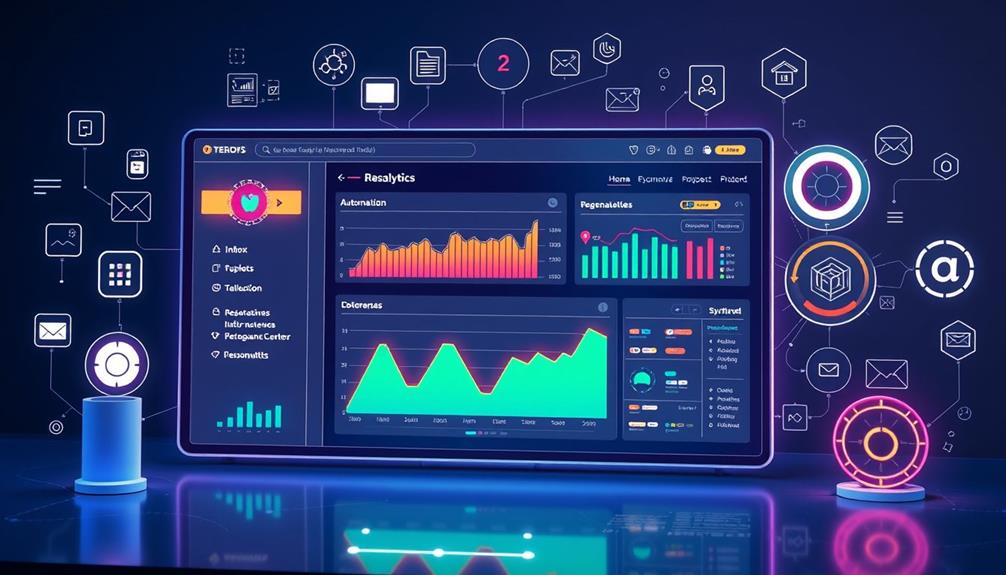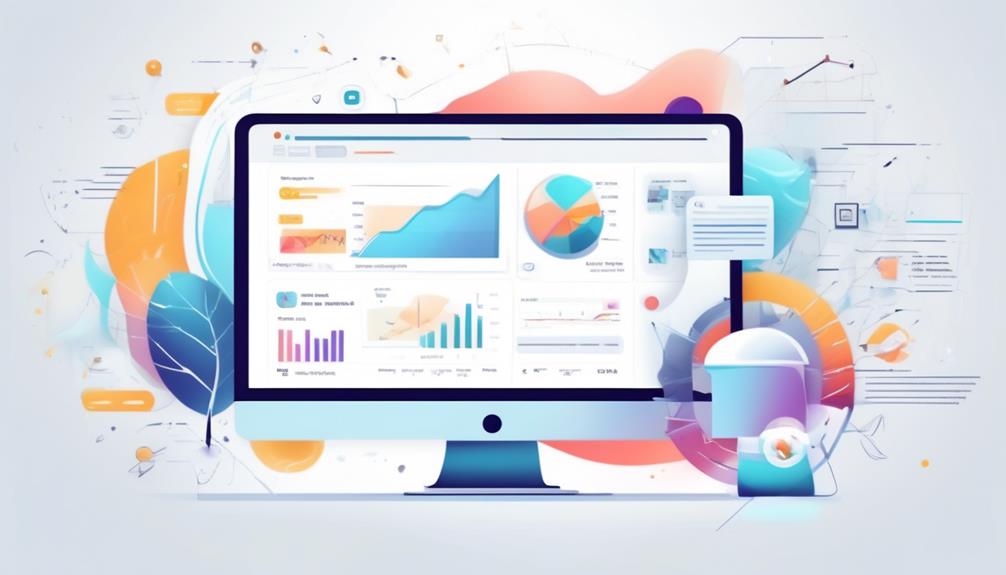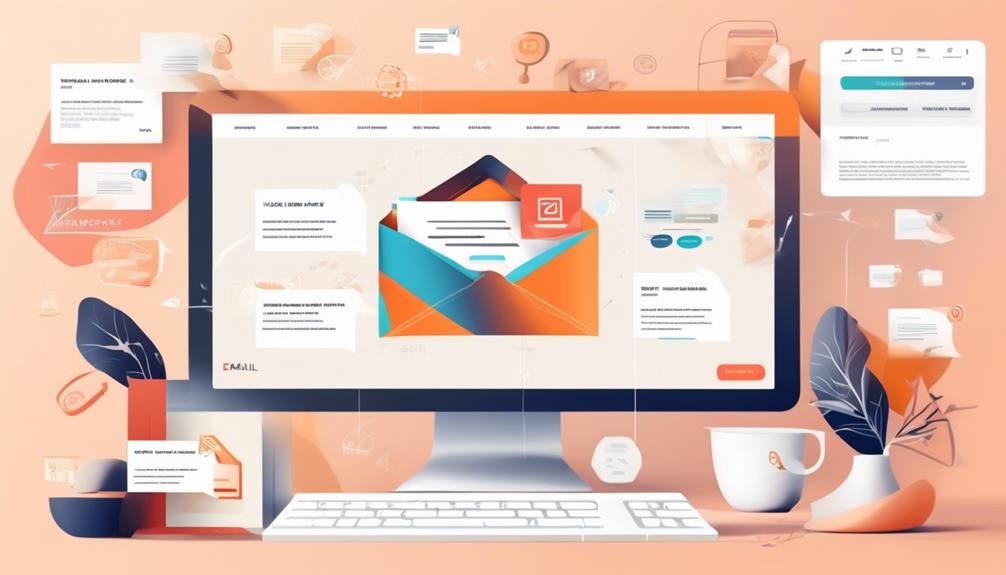Email marketing's effectiveness varies by industry, so your approach should be tailored. For healthcare, personalize messages for patients' needs. Retail thrives on seasonal promotions, while finance requires compliance and education-focused content. In B2B, targeted campaigns are essential for lead generation. Utilize segmentation and dynamic content to speak directly to your audience. Craft engaging subject lines and follow best practices for compliance and list management. Automate where possible, and integrate your email campaigns with social media for a cohesive strategy. Stay updated on trends to keep your content relevant. There's much more to explore on how to fine-tune your strategy!
Key Takeaways
- Tailor email marketing strategies to specific industries, addressing their unique characteristics and audience needs for improved engagement.
- Utilize segmentation based on demographics and behavior to create targeted campaigns that resonate with distinct buyer personas.
- Incorporate industry-specific language and current trends to enhance messaging relevance and establish authority with your audience.
- Employ personalization techniques, such as dynamic fields and behavioral triggers, to boost open rates and customer loyalty.
- Regularly measure campaign performance through key metrics and A/B testing to refine strategies and improve overall effectiveness.
Understanding Industry Differences
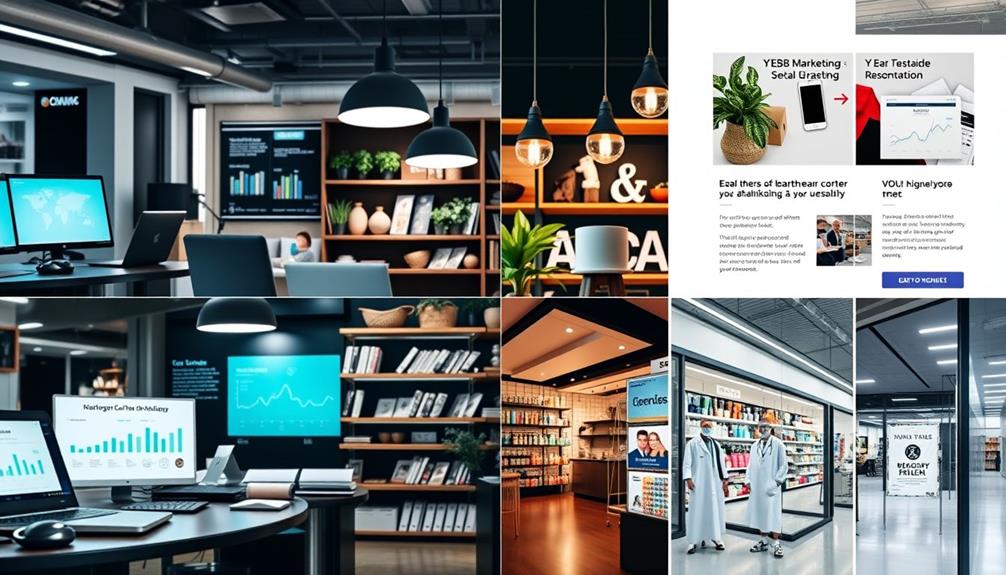
When it comes to email marketing, understanding the differences between industries is fundamental for crafting effective campaigns. Each sector has its unique buyer personas, and to make an impact, you need to tailor your email to address specific pain points and motivations.
For instance, in healthcare, personalized emails are essential; research shows that 70% of patients prefer messages that cater to their individual health needs. This means your communications should focus on their concerns and preferences, utilizing effective email marketing strategies to enhance engagement.
In retail, your target audience responds well to seasonal promotions, with 60% of consumers appreciating sales notifications during holidays. Here, effective marketing hinges on timing and relevance.
The finance sector, on the other hand, requires a different approach due to strict regulations. Targeted campaigns that educate consumers about financial products are critical for building trust and engagement.
Lastly, in B2B industries like manufacturing, 59% of marketers find targeted email campaigns are the most effective strategy for generating leads.
Crafting Targeted Messaging

When crafting targeted messaging, you need to focus on what makes each industry unique.
For example, understanding key domains of development in psychology can help tailor your messaging for parenting and child-related industries.
Using industry-specific language and addressing relevant challenges can greatly boost engagement.
Newborn constipation is a common concern, and personalizing your emails based on buyer personas not only resonates better but also drives higher conversion rates.
Industry-Specific Messaging Strategies
Crafting targeted messaging for specific industries is essential for maximizing engagement and driving conversions. By focusing on the unique needs and pain points of your audience, you can create email marketing strategies that truly resonate.
High-quality content that addresses these needs not only boosts credibility but also enhances user retention, leading to better results. Here are three key approaches to take into account:
- Utilize Buyer Personas: Understand your audience's motivations and demographics. This allows you to create tailored messaging that speaks directly to their needs, potentially increasing transaction rates by up to six times.
- Segment Your Email List: Group your subscribers based on industry-specific criteria, such as company size and role. This enables more targeted communication, ensuring your messages reach decision-makers effectively.
- Incorporate Industry Trends: Stay updated on the latest trends and compliance regulations relevant to your sector. This not only establishes your authority and trust but also aligns your messaging with what's current in the industry, enhancing your overall content relevance and authority.
Personalization Techniques for Engagement
Personalization techniques can greatly enhance your email marketing engagement by making your messages feel more relevant and tailored to the recipient. When you use data like first names and past interactions, you create engaging content that resonates with your audience. Dynamic fields in your emails allow for real-time personalization, ensuring recipients see information that matches their interests.
To maximize your efforts, segment your list based on demographics and past purchase behavior. This lets you tailor messages to address unique pain points, boosting your click-through rates markedly. Additionally, leverage behavioral triggers, such as cart abandonment reminders, to engage users at critical moments.
Here's a quick overview of effective personalization techniques:
| Technique | Description | Benefits |
|---|---|---|
| Dynamic Fields | Use recipient data in real-time | Enhances relevance |
| List Segmentation | Group users by demographics and behavior | Targets specific needs |
| Behavioral Triggers | Send emails based on user actions | Increases conversion chances |
| Personalized Offers | Create tailored discounts | Boosts customer loyalty |
| Engaging Subject Lines | Craft compelling subject lines | Improves open rates |
Building a Segmented Email List

Building a segmented email list is essential for your marketing success. By using lead magnets, you can attract the right subscribers and guarantee they're genuinely interested in what you offer.
Properly segmenting your list can also help you tailor your messaging and improve engagement rates, which is especially important when considering factors like credit score influences on financial products.
Plus, following compliance and best practices keeps your list healthy and engaged, leading to better overall performance.
Importance of Segmentation
When it comes to email marketing, segmentation is key to unfastening higher engagement and conversion rates. By implementing effective segmentation strategies, you can create targeted messaging that resonates with your audience. This approach not only boosts open rates by 14.31% but also doubles click-through rates compared to non-segmented campaigns.
The importance of understanding customer needs is akin to how energy-efficient appliances can lower overall energy consumption by addressing specific requirements. Here's why segmentation matters:
- Relevancy: By categorizing subscribers based on demographics, behavior, and interests, you deliver more relevant content, enhancing customer engagement and satisfaction.
- Profitability: Effective segmentation can lead to a staggering 760% increase in revenue for businesses that tailor their marketing efforts to specific customer groups.
- Performance Tracking: Utilizing segmentation allows for precise tracking of campaign performance, facilitating continuous improvement and optimization of your email marketing efforts.
Regularly updating and refining your segmented email lists guarantees that your communications remain relevant and effective. This practice ultimately improves your overall campaign success rates.
Lead Magnets for Engagement
Creating a segmented email list is a powerful way to enhance your engagement strategies, and lead magnets play a vital role in this process. By offering valuable content—like ebooks, webinars, or exclusive discounts—you can greatly boost your email list sign-ups.
Utilizing strategies from best websites to earn money online can help you identify what types of lead magnets resonate with specific audience segments. When you tailor these lead magnets to different buyer personas or stages in the customer journey, you'll enhance engagement and increase conversion rates.
A well-crafted lead magnet can improve your opt-in rate by up to 25%. This immediate value encourages users to willingly share their contact information. Regularly updating and rotating your lead magnets based on audience interests and seasonal trends keeps your email list fresh and engaged.
It's important to confirm that the content remains relevant to your audience to maintain their interest. Additionally, implementing a double opt-in process after lead magnet sign-ups can enhance the quality of your email list. This guarantees that subscribers are genuinely interested in receiving your communications, leading to a more engaged audience.
Focus on creating compelling lead magnets to not only grow your email list but also foster meaningful connections with your subscribers.
Compliance and Best Practices
To guarantee your segmented email list is both effective and compliant, it's crucial to adhere to data protection regulations like GDPR and CAN-SPAM. This means implementing clear opt-in procedures and providing easy unsubscribe options for your recipients.
Understanding the psychological factors that influence user behavior, such as emotional responses and identity confusion, can further enhance your approach to segmentation and engagement, particularly in sensitive contexts like BPD dynamics in relationships.
Here are some best practices to follow:
- Use Double Opt-in: This method confirms user interest, maintaining a high-quality email list and boosting engagement rates.
- Segment Your Email List: Group subscribers based on demographics, behavior, and interests. This tailored approach can lead to a 28.57% increase in click-through rates.
- Regularly Clean Your List: Remove inactive subscribers to improve deliverability rates and ensure compliance with regulations.
Incorporating lead magnets, such as exclusive content or discounts, can effectively attract subscribers while allowing for better segmentation.
Personalization Strategies for Engagement

Personalization strategies in email marketing can greatly boost your engagement rates. By addressing your recipients by their first names, you create a personal connection that makes them feel valued. This simple tactic can considerably enhance engagement and lead to a 28.57% increase in click-through rates.
Additionally, incorporating insights from coffee culture can make your content more appealing to coffee enthusiasts, aligning your messaging with their interests.
Implementing dynamic fields allows you to deliver tailored content based on past behaviors, making your emails more relevant and appealing. When you utilize behavioral triggers—like sending emails based on specific user actions—you guarantee that your messaging is timely and resonates with your audience. This approach not only improves the chances of conversions but also fosters stronger connections with your subscribers.
Moreover, personalized content can result in transaction rates that are six times higher compared to generic emails. By focusing on customized communication, you can engage your audience more effectively, leading to increased loyalty and sales.
Ultimately, the key to successful email marketing lies in making your recipients feel special and understood through these personalization strategies, assuring they're more likely to interact with your messages and take action.
Leveraging Automation for Efficiency

Harnessing the power of automation can take your email marketing efforts to the next level, building on the personalized strategies that engage your audience.
By leveraging email automation tools, you can send timely and relevant messages that notably improve engagement and response rates. Additionally, just as a song like Blue Skies and Lemonade evokes feelings of joy and nostalgia, your emails can create a memorable experience for your subscribers.
Here are three key ways to utilize automation:
- Welcome Series Emails: These automated greetings for new subscribers can boost revenue by 320% compared to standard promotional emails. By making a great first impression, you set the stage for future interactions.
- Behavioral Triggers: Implementing follow-up emails based on user actions personalizes the customer experience. This approach can increase click-through rates by 28%, making your emails more effective.
- Re-engagement Campaigns: Targeting inactive subscribers with personalized content can reclaim up to 45% of lost customers. Automated communication keeps your audience engaged and encourages them to reconnect with your brand.
Measuring Campaign Performance
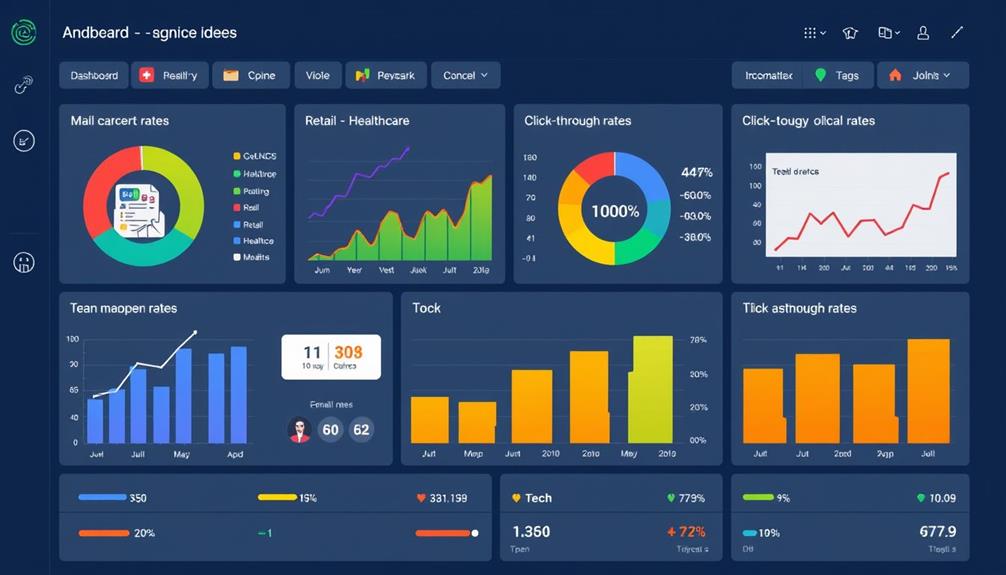
Measuring the performance of your email campaigns is essential for understanding their impact and driving improvement. By tracking key metrics like open rates and click-through rates, you can assess the effectiveness of your strategies.
For instance, A/B testing different elements—such as subject lines and content—can boost subscriber engagement by up to 20% when you implement the best-performing variations. To enhance your approach, consider applying strategies for nurturing an imaginative mindset in your email content, as creativity can greatly influence engagement.
Analyzing subscriber engagement metrics allows you to refine your targeting strategies. Personalized content can lead to a considerable 28.57% increase in click-through rates, enhancing overall campaign performance.
Additionally, keeping an eye on unsubscribe rates helps you identify potential issues in your email strategy, prompting necessary adjustments in content or frequency.
Implementing feedback loops, such as surveys or polls, can provide valuable insights into customer preferences and satisfaction levels. This information not only informs your current campaigns but also enhances future efforts.
Compliance and Best Practices

Understanding the metrics of your email campaigns lays the groundwork for effective compliance and best practices. Compliance with email marketing regulations, like the CAN-SPAM Act and GDPR, is vital for avoiding legal penalties and maintaining consumer trust.
Here are three key compliance best practices you should follow:
- Clear Opt-Out Options: Always include a straightforward way for recipients to unsubscribe, as mandated by the CAN-SPAM Act. This transparency builds trust with your audience.
- Obtain Explicit Consent: Under GDPR, you must secure explicit consent from your recipients before sending marketing emails. Be transparent about how you'll use their data.
- Maintain a Clean Email List: Regularly clean your email list by removing inactive subscribers. This not only boosts your email deliverability rates but also helps you avoid spam filters.
Educating your team about these compliance best practices guarantees everyone understands the importance of adhering to these regulations.
When you prioritize compliance, you foster stronger relationships with your audience, ultimately enhancing the effectiveness of your email marketing strategies.
Integrating Email With Other Channels
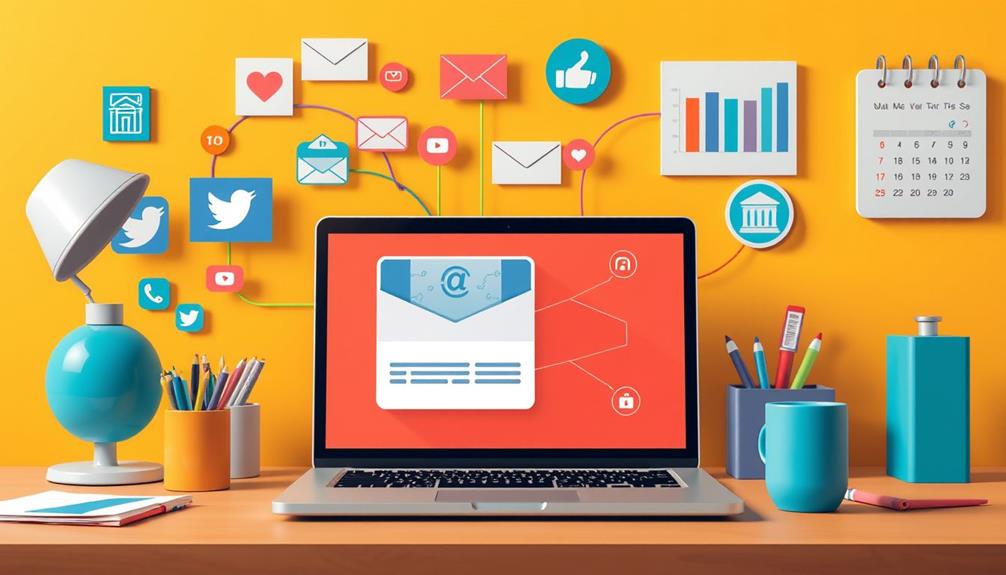
Integrating your email marketing with other channels can greatly boost your engagement and reach.
By sharing content across social media and aligning your campaigns with sales initiatives, you create a unified marketing strategy that resonates with your audience.
This approach not only enhances your email efforts but also drives traffic and conversions more effectively.
Cross-Channel Content Sharing
There's a powerful synergy that emerges when you combine email marketing with other channels, such as social media.
Integrating these platforms can considerably enhance your email marketing campaigns, boosting lead generation and audience retention.
Here's how you can effectively share content across channels:
- Promote Blog Posts and Videos: Include links to your latest blog posts or videos in your emails. This not only drives traffic but also encourages subscribers to share your content, enhancing brand awareness.
- Leverage Social Media: Share snippets or highlights of your email content on social media platforms. With 73% of marketers agreeing that this approach increases engagement, you'll see improved audience interaction.
- Align with Events and Webinars: Integrate your email campaigns with upcoming webinars or events. This tactic reinforces your content marketing strategy and builds loyalty among your audience.
Unified Marketing Strategy
A unified marketing strategy brings your email marketing efforts to the next level by ensuring all your channels work in harmony.
By aligning your email campaigns with messaging from other platforms, you create a consistent brand experience that strengthens customer relationships. This consistency boosts the effectiveness of your email marketing strategy, leading to increased engagement and conversion rates.
For instance, integrating email with your sales initiatives can streamline lead nurturing, resulting in a 30% increase in conversions. You could also promote webinars or events through email, driving attendance and engagement rates by up to 50% when you follow up afterward.
Additionally, cross-channel promotions—like embedding links to blogs or videos in your emails—can enhance website traffic by 40%, maximizing your marketing impact.
Ultimately, a unified approach not only fosters growth and success across channels but also amplifies the reach of your email campaigns.
Social Media Integration
By combining email marketing with social media, you can greatly enhance your reach and engagement.
Integrating these channels not only drives traffic but also fosters community interaction. Here are three effective strategies to evaluate:
1. Promote Email Sign-Ups: Use your social media platforms to share email sign-up forms. This can lead to a 20% increase in your subscriber lists, amplifying your reach.
2. Share Valuable Content: Regularly share blog posts and other valuable content through your email campaigns.
Encourage recipients to follow your social media accounts, creating a cohesive multi-channel marketing strategy that enhances customer engagement.
3. Align Campaigns: Make sure your email campaigns align with your social media promotions.
This unified brand message can improve brand visibility and lead to a 24% higher conversion rate compared to standalone efforts.
Future Trends in Email Marketing

Increasingly, email marketing is evolving to meet the demands of a more sophisticated audience. Personalization is at the forefront of this evolution. By tailoring your emails to individual preferences, you can boost click-through rates by an impressive 28.57%.
Embracing interactive content, like polls and quizzes, will further enhance user engagement, making your emails more dynamic and appealing.
Mobile optimization is critical, considering that over 50% of emails are opened on mobile devices. Ensuring your designs are responsive and using single-column layouts will improve readability for your audience.
As concerns about data privacy grow, it's crucial to comply with regulations like GDPR and CAN-SPAM. Transparency builds trust, which is fundamental for successful campaigns.
Artificial intelligence is set to revolutionize email marketing by enabling sophisticated personalization and automation. By utilizing AI, you can streamline your efforts and enhance your overall effectiveness.
To stay ahead, remember to follow email marketing best practices, focusing on relevant content, clear calls to action, and ongoing analysis of your campaigns. Adapting to these future trends will help you connect with your audience more effectively and drive better results.
Overcoming Common Challenges

When tackling email marketing, you're likely to encounter several common challenges that can hinder your success. Addressing these issues is important for effective campaigns. Here are three key strategies to help you overcome them:
- Improve Segmentation: Many companies struggle with low open rates. By segmenting your audience effectively, you can target specific groups with tailored content, making your emails more relevant and engaging.
- Focus on Personalization: Personalization is essential. Emails that are personalized can lead to transaction rates that are six times higher compared to generic messages. Use your data to craft messages that resonate with individual recipients.
- Ensure Compliance and Deliverability: Compliance with regulations like GDPR and CAN-SPAM is critical. Additionally, focus on email deliverability by avoiding spam trigger words and using whitelisting techniques to enhance inbox placement.
Regularly analyze key metrics, such as click-through and unsubscribe rates, to refine your email strategies.
Frequently Asked Questions
How Can I Determine My Industry's Specific Email Marketing Needs?
To determine your industry's specific email marketing needs, analyze your audience, research competitors, identify key trends, and gather feedback. This'll help you create targeted campaigns that resonate and drive engagement effectively. Adjust as necessary!
What Are the Key Metrics for Different Industries in Email Marketing?
Did you know that the average email open rate across all industries is about 21%? To gauge your success, focus on metrics like open rates, click-through rates, conversion rates, and unsubscribe rates for your specific industry.
How Often Should I Send Emails in Various Industries?
You should send emails based on your audience's preferences and industry norms. Generally, weekly or bi-weekly works well, but test different frequencies to find what keeps your subscribers engaged without overwhelming them.
What Types of Content Resonate Most With B2B Versus B2C Audiences?
B2B audiences crave detailed insights like a thirsty traveler seeks an oasis, while B2C folks prefer engaging stories that spark emotions. Tailor your content accordingly, and you'll captivate both markets with ease.
Are There Industry-Specific Email Marketing Tools or Platforms to Consider?
When exploring email marketing tools, you'll find platforms like Mailchimp for general use, while HubSpot suits B2B needs. For e-commerce, consider Klaviyo, which specializes in personalized campaigns that drive customer engagement and sales effectively.
Conclusion
In the ever-evolving landscape of email marketing, your approach should be as unique as the industries you serve. By tailoring your strategies and embracing personalization, you can ignite connections that spark engagement and loyalty. Just as a skilled artist blends colors, you can harmonize your messages with your audience's needs, creating a masterpiece of communication. As you navigate future trends, remember: adaptability is your brush, and creativity is your canvas. Craft your emails to resonate, and watch your impact grow.

